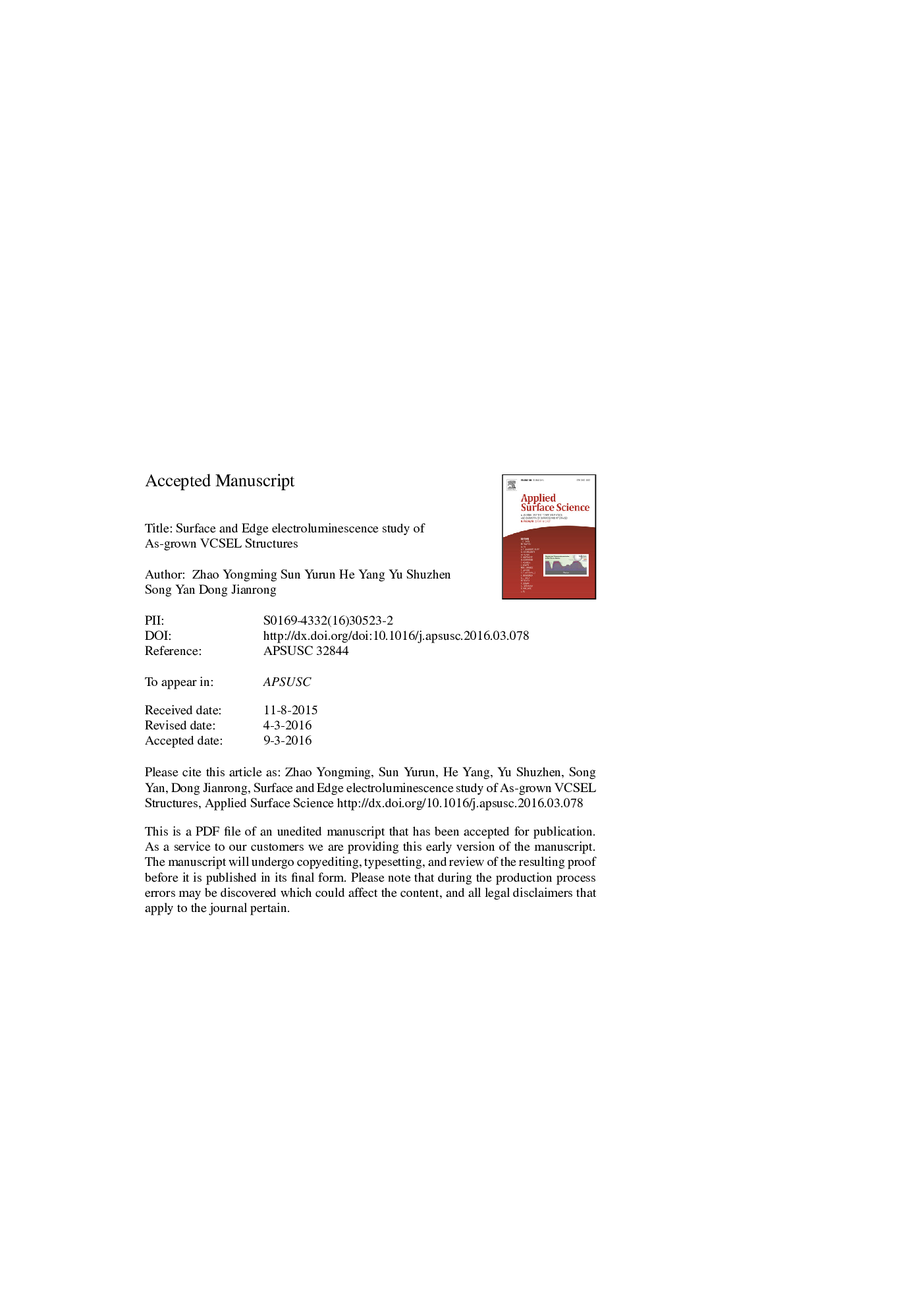| Article ID | Journal | Published Year | Pages | File Type |
|---|---|---|---|---|
| 5348513 | Applied Surface Science | 2016 | 11 Pages |
Abstract
We present a simple quick evaluation method on vertical-cavity-surface-emitting laser (VCSEL) structures, which is designed for atomic clock working at high temperature (>350 K), to determine the temperature at which the wavelength of the VCSEL cavity mode (CM) aligns with that of the quantum well (QW) gain peak. The surface and edge electroluminescence (EL) measurements were performed non-destructively on pieces of as-grown VCSEL structures by employing soldered indium (In) contacts. The surface EL spectra determine the CM position, while the edge EL spectra are used to identify the wavelength of ground-state emission from the QW in the active region (QW gain peak). The room temperature EL measurements from a cleaved edge of the VCSEL structures indicate that the QW gain peak is at â¼780.5 nm, while the CM measured in the VCSEL surface emission EL peak (sample B) is at â¼793 nm. When the sample is heated up, the amount of CM shift with temperature can be fitted with ÎλCM=TÃ0.068nm/K, also corroborated by temperature dependence surface reflectivity measurement, and the gain peak can be fitted withλQWpeak=780.5nm+TÃ0.26nm/K. The CM and QW gain peak of sample B will be brought into alignment at â¼365 K by fitting curve and this was confirmed by measurement. In summary, the surface and edge EL measurements using soldered In as electrodes can be very useful for post growth non-destructive characterization of VCSELs at different temperature.
Related Topics
Physical Sciences and Engineering
Chemistry
Physical and Theoretical Chemistry
Authors
Yongming Zhao, Yurun Sun, Yang He, Shuzhen Yu, Yan Song, Jianrong Dong,
